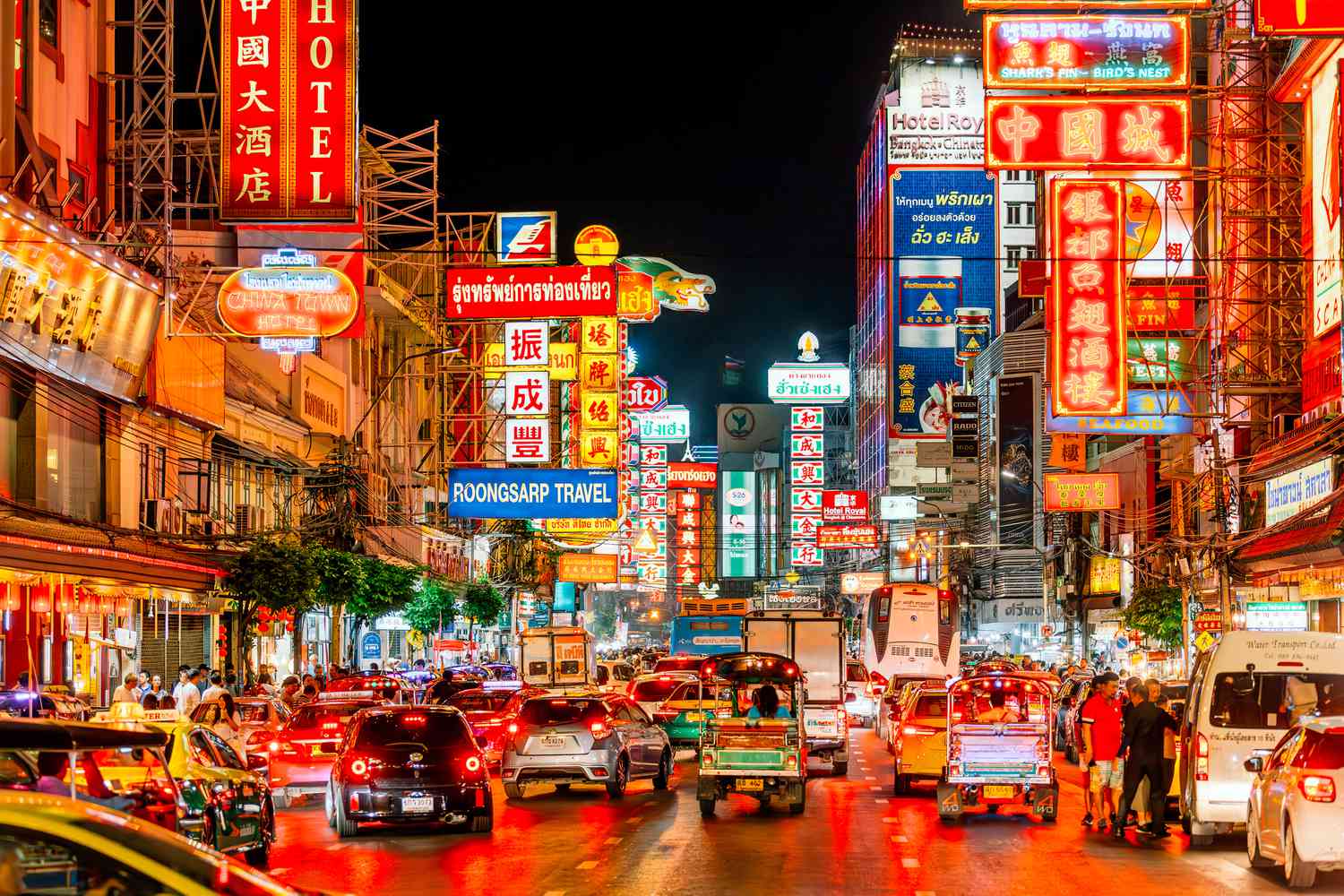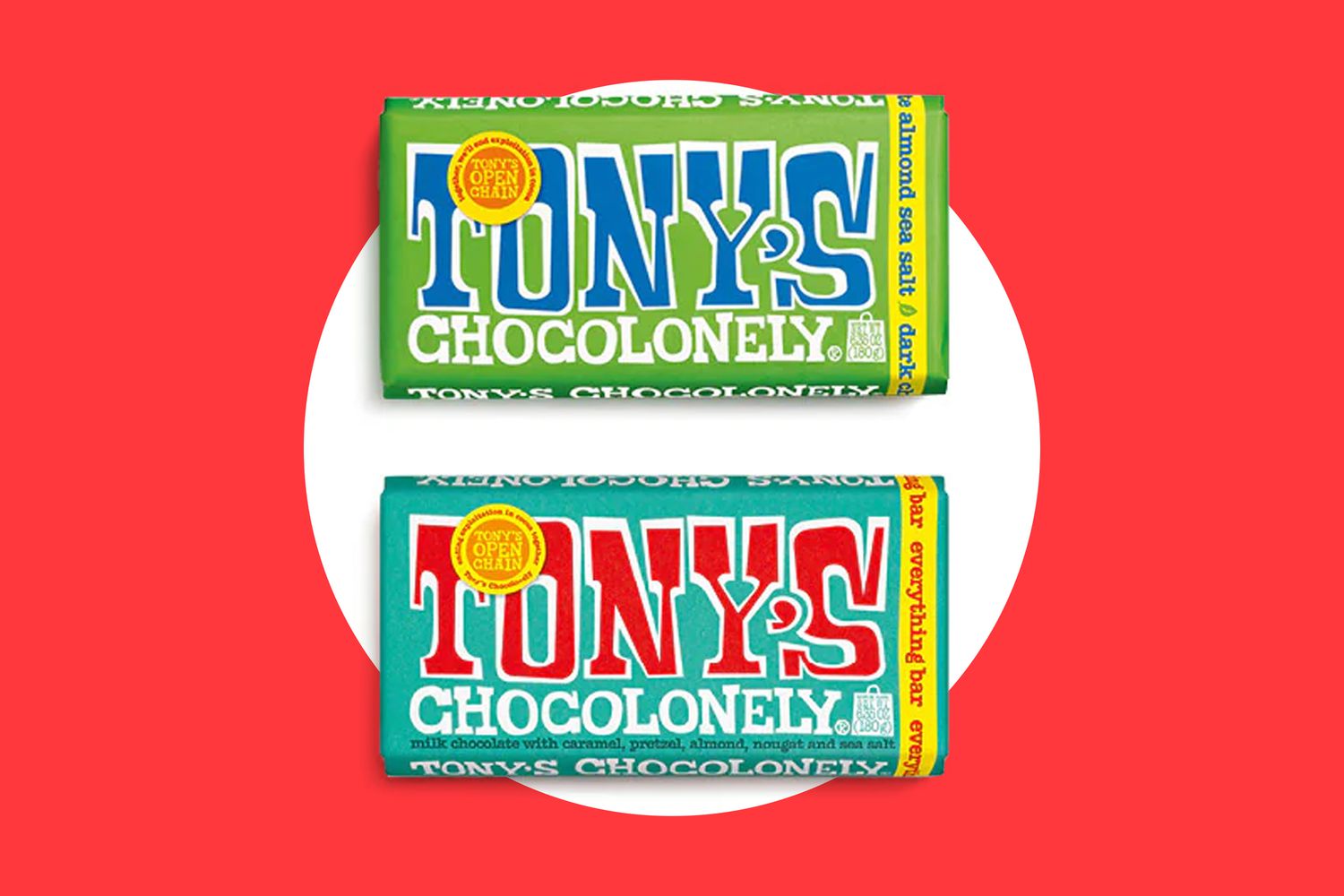
The Eating Never Stops in Bangkok, the World’s Top Food City
Food & Wine’s 2025 Global Tastemakers Awards were determined prior to the Myanmar earthquake that’s impacting Thailand. Here’s how you can help.
Bangkok mornings break with pillowy deep-fried pa thong ko crullers dunked in sweet coffee and bags of chile-dusted green mango, all consumed on bustling commutes. Moo ping, skewers of fatty pork caramelized over charcoal, fuel late afternoons, and roti dripping in condensed milk make for a perfect late-night snack. In Thailand’s kaleidoscopic capital, food isn’t just a biological need — it’s an enthusiastic all-hours pursuit that defies traditional mealtimes, sustained by dishes that are always readily available, so you can stuff your face from dawn to dusk (and long after that).
With its endless street-food carts and market stalls, Bangkok’s city grid is essentially a giant buffet. At Or Tor Kor Market, the most majestic of the capital’s wet markets, vendors hawk premium seafood, unblemished tropical fruits, and a dozen shades of nam prik chile paste from as early as 6 a.m. Even if you’re not shopping for ingredients, it’s worth visiting the gleaming food court to graze through row after row of stalls doling out northeastern Thai som tam papaya salads, fiery southern fish curries, and plump prawns straight from the grill. Downtown, the new EmSphere shopping mall has given the food-court concept a modern spin with Em Market, a neon-lit dining hall with offshoots from northeastern Thai restaurant Zao and legendary braised-beef hot spot Yih Sahp Luhk.
Suttipong Sutiratanachai / Getty Images
In restaurant kitchens, the arrival of Bangkok’s first Michelin guide in 2018 prompted chefs to reimagine regional Thai flavors and childhood recipes for the fine-dining crowd, sparking a creative renaissance that continues to this day. This year, Sorn chef Supaksorn Jongsiri’s homage to southern Thai cooking, became the world’s first Michelin three-star Thai restaurant. But while local-rooted tasting menus continue to shine, Bangkok’s hottest table is refreshingly informal: At the easygoing Charmgang on the fringe of the city’s Chinatown, the three chef-owners, who cut their teeth in the kitchen of David Thompson’s Nahm, draw a dedicated crowd with smart takes on regional Thai curries. It’s become such a hit that it recently branched out with Charmkrung a few blocks away, where small-plate Thai dishes are matched by a stellar wine list.
They’re not alone in trading degustation menus for soulful comfort food brimming with sanuk, a Thai catchall word roughly translated as “fun.” Chef Thitid Tassanakajohn of the much-acclaimed Le Du launched a casual sibling, Le Du Kaan, as part of a new sky-high dining complex atop a skyscraper in the Sathorn business district. In-the-know Bangkokians flock to riverside restaurant Horsamut for the coconutty tom yum goong and crab curry, while David Thompson, one of the champions of Bangkok’s modern Thai food movement, has taken a more down-to-earth turn with Chop Chop Cook Shop, serving satisfying noodle soups with prawn wontons and roast duck in the heart of Chinatown.
Stick only to Thai food, though, and you’ll miss out on the full picture. Over the past few years, a growing number of chefs and restaurateurs from around the globe have put down roots in the Thai capital, driving a dining scene that’s more deliciously diverse than ever before. Yangon institution Rangoon Tea House recently brought its modern Burmese tea-leaf salads, mohinga fish soups, and chickpea tofu fritters to a terrazzo-clad Bangkok outpost in the hip Thonglor district, while Japanese transplant chef Shin Inoue commands a weekslong wait list for the meticulously crafted soba noodles he serves at his pint-size joint No Name Noodle. Early this year, haute Laotian restaurant Funky Lam Kitchen returned; its first iteration was a pandemic casualty. And with the opening of Ojo, chef Francisco Ruano of the renowned Alcalde in Guadalajara, Mexico, quite literally elevated Bangkok’s Mexican food game: As Thailand’s highest restaurant, Ojo offers seaweed-dusted tostadas and smoked chicken with peanut mole with eye-popping city views.
Other newcomers draw on such a global pantry of ingredients and cooking techniques that they’re nearly impossible to pin down. Sababa, taking over a former family home in a quiet Thonglor side street, fuses flavors from the Mediterranean, Japan, and the Middle East into an izakaya-inspired menu of small plates that range from okra tempura to beef-tongue Milanese. Electric Sheep in the rapidly gentrifying Charoenkrung district and Nothing Sacred in nearby Chinatown defy culinary borders with fermentation-heavy creations such as, respectively, charred lion’s mane mushrooms with fermented lime, and ice cream made with smoked kombu. And at its fourth-floor chef’s-table space, buzzy wine bar Chenin forgoes fixed menus for weeklong pop-ups by star chefs from Warsaw to Tokyo.
Bangkok’s dining scene continues to evolve, but one thing remains constant: Whether it’s midnight or early morning, and whether you’re craving a quick Thai snack or a full-on international feast, the city always has an exceptional plate waiting for you.
To uncover the best food and drink experiences for travelers, Food & Wine polled over 400 chefs, travel experts, food and travel writers, and wine pros from across the globe for their top culinary travel experiences. We then turned the results over to our Global Advisory Board, who ranked the top nominees in each category. For the full list of all 165 winners, visit foodandwine.com/globaltastemakers.










